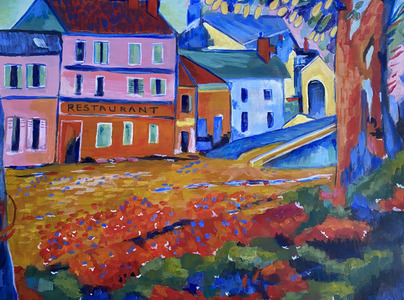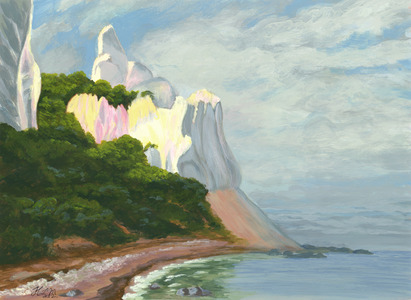Acrylic Painting I: Foundations and Styles
Instructor: Robin Adair
Tuesdays 5:30-8:30pm
10 weeks: January 21 to March 25
Location: Online
$387.50 (supplies not included)
Prerequisite: None
This course will explore a range of basic principles and techniques in painting through the lens of various stylistic periods in art history. Students will be introduced to techniques such as chiaroscuro, alla prima, glazing, broken mark, impasto, and imprimatura, while exploring the art historical movements in which these techniques were utilized, including the baroque, impressionist, cubist, and expressionist periods. This class is for beginners who want an introduction to some of the basic fundamentals of painting, as well as more experienced painters who want to hone their craft in a supportive studio environment.
Syllabus
- Discussion of materials; preparing your support; exploring paint application and mixing tonal values
- Intro to the Fauvist style: colour mixing with warm and cool primaries
- Intro to the Impressionist style: exploring optic colour mixing and broken brush techniques
- Intro to the impasto technique: using complementary colours and experimenting with the palette knife
- Intro to 18th century landscape painting: exploring composition, colour harmony, and rendering textures and surfaces
- Intro to glazes: building thin layers of transparent colours and tinted hues to create chiaroscuro (light and dark) effects.
- Intro to Georgia O’Keeffe: rendering form and creating transitions with colour and directional brushstrokes
- Intro to portraiture: Johannes Vermeer’s “Girl with a Pearl Earring”
- Intro to Abstraction: understanding compositional rhythm using pattern and repetition
- Self-directed project
Supplies
- Brushes: A variety of acrylic brushes, either synthetic or hog hair bristles (ranging in size from 6-12). I recommend filberts, flats, and rounds
- Palette knives: 3 palette knives (either plastic or metal). I recommend finding different sizes of the trowel (diamond shaped) blade. Many stores will carry assorted packages of plastic knives, which are also suitable
- Paint: Please note the names given in this list are based on the ones used by Golden brand paints. If you buy other brands, you will find some variance in the way the names match the pigments
- Titanium White
- Cadmium Yellow Medium
- Primary Yellow (or Hansa Yellow Light)
- Cadmium Red Medium
- Alizarin Crimson
- Ultramarine Blue
- Cobalt Blue
- Paint palette: A large palette (around 12x16 inches). You can purchase plastic, metal, or ceramic palettes at any local art store; or, you may use your resourcefulness – i.e. an old plastic Tupperware tray will work just fine. I will also teach you how to make your own wet palette. For this you will need paper towel, parchment paper, and bulldog clips
- White gesso: 33 oz container
- Acrylic gel medium: As you will see, there is a wide range of gel mediums on the art store shelves. Most of the brands and types are suitable for this course. I recommend the Golden GAC (100 series) because it is one of the most versatile acrylic gel products available, and is suitable for the projects we will be doing in this course
- Cotton rags
- Supports: For this course, we will be using paper supports. You may choose any of the cotton rag or cover stock brands of paper. I recommend white Stonehenge because it is a good quality paper that will serve as a sturdy support once it is gessoed. Four full sheets of Stonehenge (22”x30”) should be sufficient for our projects in this course. We will be dividing the full sheets into halves and quarters as we progress through the class. Note: If you already had experience with other kinds of supports (canvas, board, etc.) please feel free to use them in this course
* For a brief list of frequently used suppliers, please see Where can I purchase supplies? on our FAQ page.











